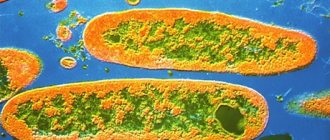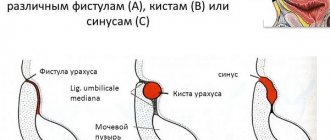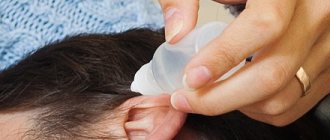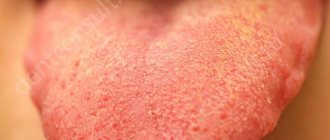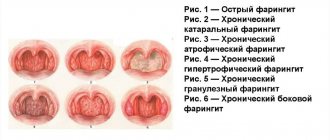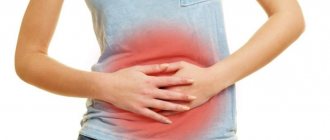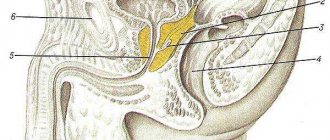A change in skin color is always a dangerous signal, indicating the presence of some health problems. In particular, if a person notices that his skin, mucous membranes and the whites of his eyes acquire a characteristic yellowish color, this indicates the development of a condition such as jaundice. Previously, jaundice was commonly called hepatitis (Botkin's disease), but today this condition includes a whole group of diseases associated with an increase in the level of bilirubin in the blood and disruption of the processes of its binding and excretion.
The reasons for the development of the pathological process can be very different. In newborns, jaundice is considered a fairly common problem associated with the restructuring of the body (symptoms of the pathology appear in children in the first week of life. In an adult, yellow skin color occurs due to various pathologies of an infectious and non-infectious nature.
Expert opinion
Sevastyanov Roman
General practitioner, hepatologist, gastroenterologist, highest qualification category. Site Expert
The disease requires timely treatment, otherwise the disorders become irreversible, and extensive liver damage occurs, leading to the need for a complex liver transplantation operation.
Characteristics of the pathology
Jaundice is usually called a whole group of diseases that lead to negative changes in the body. These changes are associated with disruption of the synthesis and binding of bilirubin, a substance that is formed from the hemoglobin of destroyed red blood cells. The synthesis of bilirubin and the process of its binding with glucuronic acid is a rather complex process that includes several stages. Violation of any of these stages leads to an increase in the level of this substance in the blood and the development of symptoms of jaundice.
There are several types of jaundice. This:
- A conjugative form in which the process of combining free bilirubin with glucuronic acid in the liver is disrupted. Most often, pathology occurs in young children. This is due to the imperfection of metabolic processes in their body. However, the disease can develop in adulthood, usually this occurs against the background of impaired liver function, due to the impact of certain negative factors on the organ;
- Hemolytic jaundice occurs in cases where pathological death of red blood cells is observed in the patient's body. Normally, red blood cells live for about 120 days, however, as a result of exposure to a number of unfavorable factors, red blood cells can begin to destroy much earlier. As a result of the massive death of red blood cells, an excess amount of hemoglobin is produced, from which bilirubin is subsequently synthesized. The level of the substance increases, manifestations of jaundice occur;
- The physiological form of jaundice occurs due to metabolic disorders and immaturity of the body's enzyme system. Often a pathology of this nature is observed in premature babies and people with weakened bodies;
- The parenchymal or hepatic form is considered the most common. Symptoms of the disease arise as a result of serious liver diseases, such as hepatitis, cirrhosis, in which the functionality of the organ and its ability to bind free bilirubin are impaired.
What is jaundice?
Jaundice is a series of symptoms that manifest as yellow discoloration of the skin, sclera and mucous membranes, which is associated with excessive accumulation of bilirubin in the body. Normally, this substance is released during the breakdown of red blood cells, which occurs in the spleen. Then bilirubin moves to the liver and, after participating in metabolic processes, leaves the body.
If any stage is violated, bilirubin accumulates in the blood, which leads to the sclera and mucous membranes turning yellow. Why is this happening? As hemoglobin breaks down in the body, a yellow pigment is produced. Normally, it leaves the body during bowel movements. With the development of jaundice, which is accompanied by liver failure and obstruction of the biliary tract, quite a lot of bilirubin remains in the blood. In this case, a small amount of this substance is excreted through the skin or kidneys.
This disease is one of the most common. Jaundice is especially common in countries with warm climates and unfavorable sanitary conditions. For example, in Central Asia, almost every child manages to get sick from this disease. In Eastern European countries, the prevalence of the viral form of the disease is 250 people per 100,000 population per year.
Jaundice – what kind of hepatitis is it?
Most often, jaundice is popularly called hepatitis A, or Botkin's disease. This is a viral pathology, which is accompanied by general intoxication of the body and impaired liver function. In addition, there are viral hepatitis B and, as well as autoimmune, mononucleosis, toxic, bacterial, medicinal forms of the disease.
The incubation period for the development of jaundice can last for several months. Depending on the duration, the disease can be acute, protracted or chronic.
Etiology and contributing factors
The main causes of jaundice in adults are:
- Pathological death and significant destruction of red blood cells, from which excessive amounts of hemoglobin, necessary for the synthesis of bilirubin, are released;
- Disruption of metabolic processes in hepatocytes - liver cells, while free bilirubin cannot bind to glucuronic acid and accumulates in the blood;
- Liver pathologies that disrupt the normal functionality of the organ.
Numerous predisposing factors also lead to the development of jaundice, such as:
- Systemic diseases and pathological processes in the body, for example, anemia, hepatitis, mononucleosis, cancer tumors affecting liver tissue;
- Mechanical injuries to the digestive system (liver, gall bladder and its ducts);
- Intoxication of the body, for example, with food, alcohol, drug, drug poisoning;
- Infectious diseases affecting internal organs and systems;
- Various complications after previous surgical operations.
Some forms of jaundice, for example, if the pathology develops as a result of hepatitis, are considered contagious. The risk of developing a pathological condition increases with:
- Illness of close relatives living in the same residential area;
- Sexual contacts with a patient;
- Visiting countries with unfavorable epidemiological situations;
- Drug use (when the drug is administered with a shared syringe).
Expert opinion
Tsareva Nadezhda
General practitioner, hepatologist, site expert
Excessive consumption of foods rich in carotene (carrots, pumpkin, citrus fruits, beets) can also lead to changes in skin color. In this case, we are not talking about a pathological condition. Symptoms disappear on their own, some time after normalizing the diet.
What diseases cause jaundice?
Doctors consider yellowing of the sclera and skin to be an important symptom indicating dangerous diseases:
- viral hepatitis;
- drug-induced hepatitis;
- liver dystrophy;
- cirrhosis;
- liver cancer;
- inflammation of the bile ducts;
- pancreas cancer;
- sickle cell anemia;
- lupus erythematosus;
- blood cancer.
Yellowing of the skin can also be observed when various viruses and infections enter the body , from intoxication with poison or alcohol, as well as from transfusion of an incompatible blood type.
Characteristic signs and symptoms of jaundice
Recognizing jaundice is quite simple; to do this, it is necessary to evaluate the totality of existing manifestations. Symptoms of jaundice in adults are:
- Characteristic yellowish color of the epidermis, visible mucous membranes and eye whites;
- Changes in the color of urine and feces (urine acquires a darker, brownish tint, feces, on the contrary, become discolored and become gray);
- Loss of appetite;
- Formation of a pronounced vascular network in the abdominal area;
- Increase in the size of internal organs (liver, spleen);
- Paroxysmal pain in the right upper abdomen (pain occurs spontaneously and after a while stops on its own);
- Increasing the level of red blood cells - erythrocytes;
- Mild itching, the localization of which is difficult to determine.
There are also uncharacteristic symptoms that do not appear in all cases. These include:
- Deterioration in general health, weakness, loss of performance;
- Hyperthermia accompanied by chills;
- Acute but short-term pain in the liver and pancreas;
- The formation of xanthoma - yellowish plaques in the form of nodules filled with fatty elements. Xanthomas most often appear on the face, but can affect other parts of the body and internal organs;
- A sharp decrease in body weight with the usual diet;
- Attacks of nausea and vomiting;
- Pathological accumulation of fluid in the peritoneal cavity (ascites);
- Neurological disorders.
Stages and clinical manifestations
There are 3 main stages of development of jaundice in adults. Each of them has its own manifestations. If at the initial (pre-icteric) stage there are no pronounced symptoms (the presence of a pathological process can only be determined during laboratory tests), then the final stage is characterized by an irreversible course and practically cannot be treated.
| Pre-icteric stage | Jaundice stage | Terminal stage |
As a result of exposure to negative factors, the membrane of hepatocytes is destroyed, their functionality decreases (hepatocyte enzymes that destroy bilirubin compounds become less active). This is manifested by the following symptoms:
There are no other signs of jaundice that cause discomfort to the patient and impair his well-being at this stage. | Further destruction of liver cells occurs, the process of transporting bilirubin is disrupted, as a result of which it actively accumulates in the blood. The patient experiences more severe symptoms. This is yellowness of the skin, mucous membranes and whites of the eyes, the appearance of discomfort and pain in the liver area. The affected organ may increase slightly in size. The patient loses appetite and body weight, and rare bouts of nausea occur. | At this stage, the violations become irreversible. The liver tissue is destroyed to a significant extent, and the patient develops liver failure, which can lead to coma and death. There is a high probability of other complications, in particular liver cancer with subsequent metastasis and damage to other internal organs. |
Diagnosis of jaundice
If symptoms of the disease appear, you should immediately consult a doctor. Thanks to modern medicine, this disorder can be eliminated quite quickly.
To make an accurate diagnosis, a specialist will prescribe the following studies:
- General and biochemical blood test.
- Tests to determine the level of bilirubin in the blood.
- Liver function studies.
- Liver biopsy - allows you to determine the nature of the disease and assess the severity of damage to the organ.
On the subject: Treatment of jaundice with folk remedies
Diagnostic measures
Since jaundice at the last stage of its development is a very dangerous condition that cannot be treated, it is necessary to identify the pathology and begin a course of therapy as early as possible. To make a diagnosis, it is necessary to assess the totality of symptoms present in patients, conduct a visual examination of the skin, mucous membranes, and eye sclera. After this, the doctor prescribes a set of laboratory and instrumental tests.
Laboratory diagnostics involves a microscopic examination of the patient’s biological materials (blood, urine, feces) to determine the level of bilirubin, its derivative elements and the content of enzymes. With different forms of jaundice, these indicators may vary, therefore, laboratory diagnosis is a very important point, allowing not only to identify the presence of pathology, but also to determine its form.
- Bilirubin level. The concentration of free bilirubin increases in hepatic and mechanical forms of jaundice. With the hemolytic variety, the content of indirect bilirubin increases;
- Liver enzymes (ALAT, ASAT) increase significantly in hepatic and obstructive jaundice (in this case, the level of alkaline phosphatase also increases); in the hemolytic form, the increase in enzyme content is insignificant;
- In urine, bilirubin is detected only in hepatic and mechanical forms; in hemolytic jaundice it is not detected;
- With hepatic jaundice, the level of leukocytes and ESR decreases. With a mechanical form, these indicators, on the contrary, increase. Hemolytic jaundice is characterized by a decrease in the number of red blood cells and an increase in ESR;
- Hepatic jaundice is characterized by positive indicators of markers that determine viral agents, as well as a decrease in plasma prothrombin. In other forms of the disease, these indicators remain normal.
Of the instrumental research methods, ultrasound is the most commonly used. This procedure allows us to identify damage to the tissue of the liver, gallbladder and its ducts, and therefore establish the possible cause of the development of the pathological condition.
Prevention
To prevent viral damage to liver tissue, doctors recommend first of all adhering to the rules of personal hygiene. It is necessary to wash your hands thoroughly before eating food, and also handle vegetables and fruits with soap.
Don't forget that the hepatitis virus can also be transmitted through contaminated water. A good preventative measure is vaccination during a hepatitis outbreak.
To protect yourself after contact with a sick person, you can administer immunoglobulin, which is highly effective.
Treatment methods
Therapeutic measures for jaundice are aimed primarily at eliminating the cause of the development of the pathology. For these purposes, various treatment methods are used. This includes taking medications, physiotherapeutic procedures, and following a special diet. If a patient is diagnosed with obstructive jaundice, surgical treatment will be required.
Drug therapy
The choice of medications depends on what caused the development of jaundice. The patient is prescribed:
- Vitamin preparations, if anemia led to the development of jaundice;
- Hepatoprotectors for infectious or toxic liver lesions;
- Antiviral agents for the development of viral hepatitis;
- Detoxification drugs to remove toxic substances from the body;
- Preparations for normalizing the functioning of the gallbladder in case of violations of its functionality;
- Symptomatic drugs (antiemetics, analgesics, sedatives, antihistamines) to alleviate the patient’s condition.
Physiotherapy
Various physiotherapeutic methods can normalize the functioning of the liver and gall bladder and improve the patient’s well-being. These are plasmapheresis, iontophoresis, diathermy, and ultrasound effects on the liver area.
Surgery
Surgical intervention is necessary in the development of obstructive jaundice, when there is a malfunction of the gallbladder, accompanied by stagnation of bile and the formation of stones in the organ cavity. To eliminate this situation, methods are used (endoscopic destruction of gallstones), direct operations (laparoscopy), radical surgery, which involves complete removal of the affected organ.
Medications
| Name | Description | Dosage | Price |
| Karsil | The drug has an antioxidant effect, protects liver cells from the penetration of toxic substances into them, and strengthens the hepatocyte membrane. | The dosage and duration of treatment depends on the stage of development of the pathology, the patient’s age, and his state of health. | 300 rub. |
| Interferon | The drug is prescribed for the development of viral hepatitis, which leads to the manifestation of jaundice. The drug fights the causative agent of the pathology, reduces the reproduction activity of the viral agent. | 3-10 million IU 3 times a week. The course of treatment is determined individually. | 100 rub. |
| Ursonan | The drug normalizes the process of bile production, promotes its normal excretion, and reduces the cholesterol content in its composition. | 10 -15 MG per 1 kg. body weight. The duration of treatment is more than six months. | 1500 rub. for 100 capsules. |
| Atoxyl | The product has a wide spectrum of action, has a healing, antimicrobial, detoxifying effect. Taking the drug allows you to remove harmful substances from the body that have accumulated as a result of decreased liver functionality. In addition, the product promotes the healing of existing damage affecting the tissue of the liver and gall bladder. | 200 mkg per 1 kg. weight. Divide this amount into 3 doses. The duration of treatment is 7-10 days. | 170 rub. |
Consequences
Pathological jaundice is dangerous. It is fraught with serious consequences that may appear in the near future or much later. Among them:
- Intoxication. Due to the deposition of excess bilirubin in adipose tissue and other tissues.
- Albuminemia. A decrease in the level of albumin protein against the background of excessive accumulation of bilirubin is accompanied by severe swelling and diarrhea.
- Bilirubin encephalopathy. Brain damage due to intoxication with bile pigment, in parallel, convulsions and paralysis occur, hearing deteriorates, and the psychophysical development of the baby is disrupted.
This is interesting: Differential diagnosis of jaundice: comparison table
Physiological jaundice does not cause dangerous consequences for the growth and development of the baby. It goes away on its own in 1-3 weeks.
